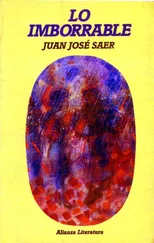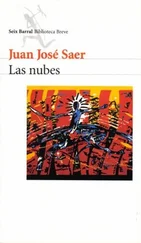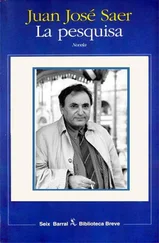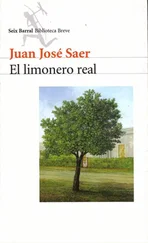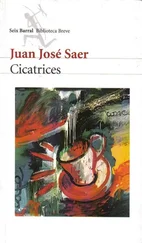With the abrupt and evidence-filled sincerity of one who plays his final card to champion himself, the gardener told us, with the support of continued approving nods from his cousin and Dr. López, of his relations with Sister Teresita, which commenced within five minutes of their first meeting, on the little chapel’s very floor, at the foot of the altar. According to the gardener, he’d resisted at first, precisely because of where they found themselves, but the little nun had convinced him, saying that nowhere in the Gospels or Church doctrines was the act they were about to perform — or, in particular, the fact of carrying it out where they were preparing to do so — condemned by any text. She might be certain of this, though it is necessary to add that, due to the enormity of such acts, even the most punctilious Fathers of the Church, whom few possible circumstances of sin eluded, would have deemed it superfluous to condemn these acts explicitly. Further: According to the little nun, Christ had ordered her many times to consummate both carnal union with the human creature and divine union with the Holy Spirit. This would allow her to attain perfect union with God, for Christ’s divinity and his human nature had been separated anew upon his ascent to the Kingdom of Heaven, his divinity seated at the right hand of God and his humanity dispersed among men.
It is obvious that the gardener had been unable to express the above in such terms, so I should clarify that, to compile these details, I base them upon Sister Teresita’s own writings: a roll of papers bundled together with blue ribbon that the nun secretly entrusted to the gardener when the scandal broke, and which the unlettered gardener left to his cousin the nurse, who brought it, finally, to Dr. López’s study. The little nun’s manuscript, titled Manual for Love , detailed a period of mystical delirium a few months before the episodes related by the gardener, and is a mix of prose and poetry in which Sister Teresita describes the passion she and Jesus Christ had shared ever since he first appeared to her in Upper Peru. It is worth noting that mental patients, when educated, can never resist the chance to express themselves in writing, trying to make their ramblings conform to the shape of a philosophical treatise or literary composition. It would be wrong to take them lightly, for those writings can be an invaluable source of significant data for a man of science; in the written word, he has at his disposal, safe from the transience of spoken ravings and fleeting actions, a series of thoughts preserved like insects fixed on a pin or a dried flower in an herbarium to be pored over by the naturalist. Hence, it seemed quite natural for my colleague to permanently entrust Sister Teresita’s writings to me. (The matter of mysticism, even if we start from the hypothesis of its causal object’s nonexistence, still warrants study, for if indeed the object is imaginary, the state that arouses belief in its reality is indisputably authentic. As in the fear of ghosts, for example, ghosts are of course nonexistent, but the fear is quite real, and as such merits thorough study, just like optics or the positions of the stars.)
In brief, the doctrine of the Manual for Love is a kind of dualism based upon the separation of the divine and the human in the wake of Christ’s resurrection, and on the belief that love, whose essence is comprised of both elements, is the only force that can bring them together and realize their unity anew. Sister Teresita claimed that her doctrine had been revealed by Christ himself in Upper Peru, and as her attempts at carnal union with the Crucified One were impossible due to the metaphysical separation of the two worlds, she could only attain that unity by practicing physical love with the largest number of human beings possible, as such acts also involve the human and the divine. During the act, every human being who partook of spiritual and physical love became a reincarnation of Christ. To tell the truth, the Manual ’s entire first part differs little or not at all from most Christian mystical writings — I might even say that Sister Teresita imitates them excessively, which explains certain archaisms in her style — but as one reads on, there is the painful sense that the author leaves off explaining the similarities of spiritual love and carnal love for the sole end of delighting in the description of physical love in all its variants, and toward the end, in the final pages (the text is unfinished), each idea becomes more incoherent than the last, the descriptions more lewd, and the prayers become mere lists of repeated obscenities. It was certainly not Sister Teresita’s theological speculations, as the official superstition put forth far more ridiculous notions daily, that placed her in the hands of Dr. Weiss, but rather the affectedly salacious final portion and the frenzied enactment of her theology. A few months after being admitted to Casa de Salud, a curious development was engendered in Sister Teresita; her behavior reversed, becoming the opposite of what had led to her admission: Her passion for Christ was transformed bit by bit into a boundless hatred, and she could not look at a crucifix or icon without falling into a fit of rage, hurling insults and trampling them to pieces. At the same time, her wild penchant for obscenity, fornication, et cetera, grew into a violent aversion, and the youthful energy that so caught my attention when I first saw her turned to a kind of bovine passivity, enhanced by the fact that she was seized by an unwholesome voraciousness. After three years, the Church, which regularly sent visitors to the Casa to track the progress of her illness, decided she was cured, and the creature they sent back to Spain was a sort of meatball in a black habit, a silent woman of uncertain age who moved with the inertia and clumsiness of a cow, eyes dull and remote; the only outer sign of life was her red cheeks, smooth and shiny on her round face, swollen (it seemed) to the point of bursting.
But the order of my story is being corrupted. The gardener’s case clearly proves a fact observed many times: Nothing is more contagious than delirium. From the story of that simple man, more confused than frightened by the situation in which he found himself, it took little effort to infer that, if he had let himself slide down that slope of lust and sacrilege with incomprehensible resignation, it was less because of her voluptuous ways than his credulity. Augustín — that was the gardener’s name — was dazed by the theological arguments, mystical enthusiasm, and — as I have had means to prove so many times — the communicative sympathy of Sister Teresita, and had sincerely believed in the religious necessity of his acts and had lent himself for months to all the little nun’s voluptuous caprices. Bearing in mind the first act they had performed at the foot of the altar and that, according to the gardener, the little nun was in the habit of talking to Christ over his shoulder during the act, it is not hard to imagine that what followed from that first sacrilege could not have been much wilder or more absurd. Curious as it seems, even while Augustín was enumerating those ludicrous aberrations that were to bring him before the firing squad, he appeared to continue to believe in the religious meaning of their acts, and seemed to doubt neither the sincerity nor the necessity that caused Sister Teresita to drive him to his execution. She also seemed to harbor a particular fondness for the gardener until she left Casa de Salud and returned to Spain, and when she referred to him it was always warmly. During the journey to Casa de Salud, the little nun told me one day, lowering her voice and adopting a confidential tone, that they had Augustín locked in jail and wanted to shoot him because he had such a big. and accompanied her declaration with an obscene gesture, placing the palms of her hands some thirty centimeters apart and bobbing them up and down together suggestively. It was clear that, following this months-long intimate relationship, each one had been convinced of the other’s innocence, and they were trying to convince everyone of this. The gardener, with a circumstantial line of argument, pleaded for himself and for Sister Teresita, and though the nun seemed to be unshakably certain regarding the source of her mission’s legitimacy, which exempted her from apology or explanation for her conduct, she adopted an attitude of total indifference, even a cheerful lewdness, before her accusers. In every word and gesture, she showed her clear confidence in Augustín, whom she always spoke of not as a lover but as a friend, which perhaps exposed the gardener to even greater animosity from his accusers, though it cast a new light on the relationship to impartial observers. After practicing for so long in a number of European hospitals, I have had contact with nuns and other members of the clergy rather frequently, and though I have often met selfless, intelligent, obliging persons of good faith among them, I must record here that if you had to name a common feature in all of them, that feature would be the evident lack of any religious element in their thoughts and actions, which — that said — happened to greatly ease our relationship. Such people — compassionate, useful, and sensible — thanks to their naturally resistant constitutions, were impervious to all that is corrosive and devastating in religious feelings and ideas. Rather than mourn, we ought to be grateful that the religious temperament is such a rare phenomenon. Just as the world is full of good and bad poets, of thinkers both obvious and relevant, of ineffectual scientists, of false prophets and alleged men of God, so too have the truly religious been known to be greedy misers. I must state that, to my mind, the only truly religious person I have known in my life was Sister Teresita, and only briefly, for when she left Casa de Salud, lifeless and rotund, her little red button nose lost between ruddy cheeks, she was religious no longer. The love she felt for Christ had been intense and sincere, and it is pointless for me to speculate whether it manifested in a suitable form because, if that object of highest adoration truly exists, even if I were randomly set upon his appointed throne, it would be difficult to say which among all the different ways that his faithful have imagined to adore him is the proper one.
Читать дальше



